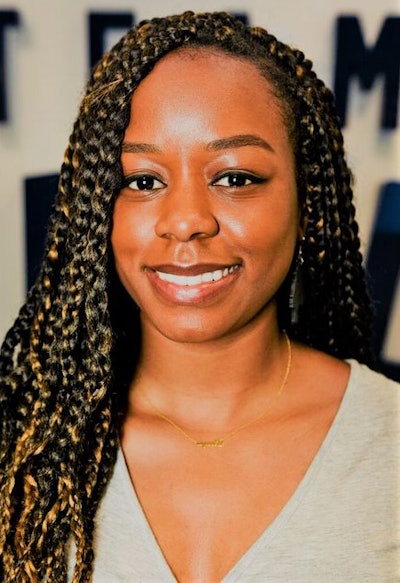During an era of vastly developing technological advances, society often looks to social media for education, guidance, and entertainment. This reality includes adolescent children of all ages. Youth are consuming media at exceedingly rapid rates. Research conducted by Common Sense Media in 2015 suggests that children between the ages of 8-12 years old consume around 5 hours of on-screen media daily, while teenagers consume a little over 7 hours on average. With streaming platforms such as Disney+, Netflix, and Hulu rising, children have access to cartoons, films, and television shows from every generation. While the amount of media access for children is increasing, it is becoming more challenging to monitor what children consume daily. With these challenges in consideration, the images that children are processing daily remain a crucial topic of discussion.
 Tamara Moten
Tamara MotenRecently Netflix was heavily scrutinized after releasing a promotional flier for a French film entitled “Cuties.” The promotional flier for this film displayed young girls in sexualized dance positions, makeup, and revealing clothing. Front and center of the promotional flier is a Black girl in an oversexualized position. While this film is rated “MA”, it is safe to assume that children would have viewed it simply due to children being on the flier. While Netflix apologized for the promotional imagery, it reinforces the hypersexualization of Black girls, as well as the exploitation and sexualization of children.
Historically, Black people have been both underrepresented and misrepresented on-screen. The deeper issue reflected in the flier shows the historically rooted sexualization of and racism against Black girls. Children’s media has been no exception to these complex concerns. The consumption of images portrayed in media has the capability to influence the perceptions and behaviors of Black children, especially girls. One of the largest children’s media providers, Walt Disney Pictures, has an extensive history of racist imagery, offensive content, and stereotypical characters. This legendary media conglomerate did not feature a non-White princess in a film until 1992, with a middle eastern princess named Jasmine in the movie Aladdin. The first Black princess was not featured until 2009, as Princess Tiana, in “The Princess and The Frog.”
Films by Disney have and continue to contain countless incidents of culturally offensive material in films such as “Dumbo,” “Peter Pan,” “Lady and The Tramp,” “The Jungle Book” and “Aristocrats,” which have been labeled with the warning stating “outdated cultural depictions” on their new streaming service Disney+. Despite offensive depictions, these films are still available for public consumption.
Cartoons produced by media company Warner Bros have also been criticized for racism and culturally insensitive content. In 2014, their early animated television show “Tom and Jerry” began displaying an ethnic and racial prejudice warning on Amazon’s streaming network. One character that many found problematic is a Black heavy-set housemaid character named “Mammy Two Shoes.” Mammy is a term often used to describe a stereotypical Black female character who takes care of the home and children of White families.
 Jeremy C. McCool
Jeremy C. McCoolWith the increase of streaming platforms such as Netflix, Hulu, Amazon Prime, and YouTube, animated shows of the past and present are available for children around the country on-demand. The prevalence of this access raises the concern of exposure to offensive and stereotypical imagery from all decades. As children begin to formulate parasocial relationships with fictitious characters, these images have the potential to subconsciously define racial groups.
To state that children are susceptible to media messaging is an understatement. Children often become infatuated with characters that they come across within films, television, books, online and in video games. Black children often do not see themselves reflected in media and that can cause self-esteem issues and an inferiority complex. However, seeing themselves in negative stereotypical circumstances can sway how they view both themselves and their peers. Technology has given children an abundance of entertainment options, there are images of the past and present that remain alarming. To work toward progression, companies with a history of anti-Black racism should both denounce and remove their prior imagery, as well as hire Black creative experts to create a new pathway of positive children imagery.
History informs the present. Although we have made progress since slavery and the stereotypes that sustain it, more work must be done to ensure that a holistic representation of Black children is presented. As difficult as it may be in today’s climate, parents must be mindful of the imagery consumed by children and make a conscientious decision as to what is acceptable to view, and what is not. However, to do this, society must be aware that stereotypes and oppression currently still exist. This realization may lead to tough, but necessary, discussions regarding equality, racism, sexism, and representation. Educating ourselves and the generations to come after us is critical to transforming the future, dispelling damaging stereotypes and oppressions, and building positive images of Black children in the media.
Jeremy C. McCool is a Ph.D. candidate and instructor in the Media & Communication Studies Program at Indiana University of Pennsylvania. Tamara N. Moten is a Ph.D. student in the Language and Literacy Education Program at the University of Georgia.





















